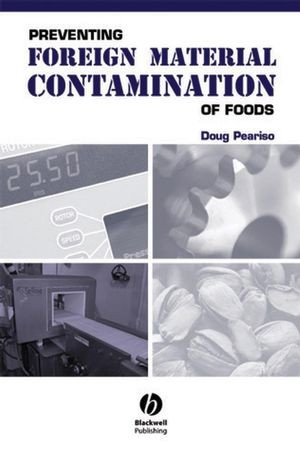

Most ebook files are in PDF format, so you can easily read them using various software such as Foxit Reader or directly on the Google Chrome browser.
Some ebook files are released by publishers in other formats such as .awz, .mobi, .epub, .fb2, etc. You may need to install specific software to read these formats on mobile/PC, such as Calibre.
Please read the tutorial at this link: https://ebookbell.com/faq
We offer FREE conversion to the popular formats you request; however, this may take some time. Therefore, right after payment, please email us, and we will try to provide the service as quickly as possible.
For some exceptional file formats or broken links (if any), please refrain from opening any disputes. Instead, email us first, and we will try to assist within a maximum of 6 hours.
EbookBell Team

4.1
80 reviewsRecent and past regulatory enforcement actions and case studies provide the reader with clear real world examples of how producers have successfully and unsuccessfully handled issues related to foreign material contamination. Numerous tables and illustrations assist in developing HACCP plans, or when evaluating the validity of existing plans as an internal/external auditor. Statistical sampling concepts are presented in combination with industry standard test methods in a visual manner that is easily understandable. Prevention and evaluation of foreign material contamination are discussed with a farm to table focus along with the latest information on technology/strategies utilized for the detection and culling of foreign material in food products including: metal detection, density separation, x-ray of product streams, magnetic separation techniques, automated color and shape recognition, proper microscopic examination for micro-physical contaminants, and analytical test methods for determining the origin of macroscopic contaminants.
Real world strategies of applying these technologies are profiled for readers to better visualize applications possible within their own environments. The essential concepts of installation qualification, operational qualification and ongoing verification of equipment performance are also presented. Additionally, the reader will be able to identify, quantitatively evaluate, and set management policy on "situations of risk" encountered in the company’s day-to-day environment. Strategies and concepts cover the full spectrum of food production:
Written for quality assurance, HACCP, and related professionals charged with maintaining the integrity of their food product, Preventing Foreign Material Contamination of Foods offers conceptual, pragmatic, and implementable strategies to detect and eliminate physical contamination during food processing.Content:
Chapter 1 The Importance of Preventing Foreign Material Contamination of Food Products (pages 1–26):
Chapter 2 Proactive Management Strategies for Dealing with Foreign Materials (pages 27–66):
Chapter 3 Physical Separation Techniques for Controlling FM Contaminants (pages 67–92):
Chapter 4 Applications of Magnetic Separation to Prevent Foreign Material Contamination of Finished Food Products (pages 93–122):
Chapter 5 Principles and Strategies for Using Metal Detectors to Isolate Metallic Foreign Materials From Food Products (pages 123–144):
Chapter 6 Machine Vision and its Application to Prevent Fm Contamination of Foods (pages 145–182):
Chapter 7 X?Ray Examination of Foods for Foreign Materials (pages 183–210):
Chapter 8 Proper Initial Validation, Ongoing Verification, and Change Control for Separation and Detection Equipment (pages 211–228):
Chapter 9 Proper Use of Acceptance Sampling and Statistical Process Control to Augment FM Control Programs (pages 229–270):
Chapter 10 Management and Communication of Risk in Situations of Crisis (pages 271–300):